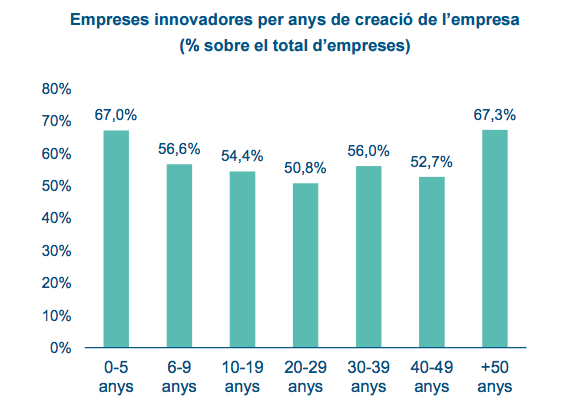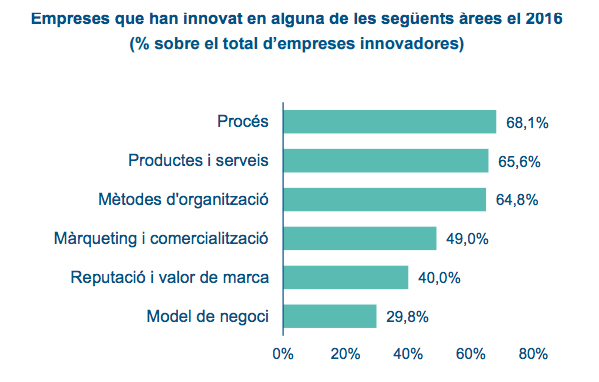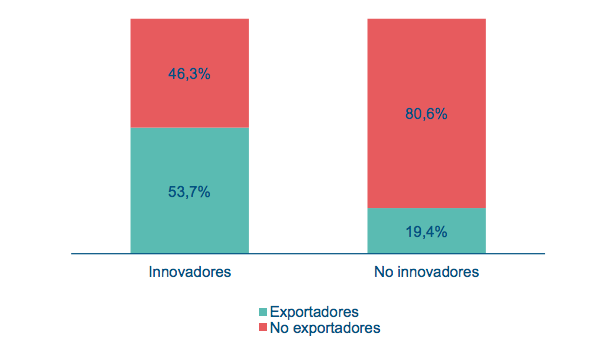Catalan companies are convinced: their passport to selling around the world is innovation. This is what the Innovation Barometer shows, which Acció presented on Wednesday. The data in the report suggests that 54.6% of companies innovated in 2016, which were also the ones that exported the most, particularly in the industrial sector. “Companies cannot maintain their activities over time if they do not bring added value to the market,” points out the new CEO of Acció, Joan Romero. “And they cannot enter more markets without a competitive and innovative product,” he added. In fact, he stressed that if Catalonia has seen six record years in exports, it has to be understood that it is due to their dedication to innovation.
What is innovation?
The head of Acció was at pains to define innovation as that “activity carried out by companies to develop solutions that can be taken into the market.” He thus made a distinction between the concepts of innovation and R&D, which is the activity carried out not only by companies but also other agents, such as universities or research centres. Thus, the Barometer aims to analyse innovative activity in Catalan companies with the maximum amount of data possible.
The head of research and statistical analysis at Acció, Antoni Fita, points out that innovation is increasingly relevant beyond technology to the point of being intangible. “Starbucks did not invent coffee; it innovated in the way it was consumed. It is more or less the same with Ikea and furniture,” she said by way of example. “If in the 20th century we saw innovation as technology for new products, that continues to be true but the subject of intangibles is gaining a lot of ground,” she argued.
Growth of innovation
Through a representative sample of 1,200 companies with more than nine employees, the Innovation Barometer shows that in 2016 R&D activity in businesses increased in Catalonia. From 24.1% in 2015, it has risen to 25.4%. What’s more, investment in business R&D has also gone up, with 58% of companies devoting more resources to it than the previous year.
Beyond technological innovation, and including the intangible type, “business innovation has also been consolidated,” insists Fita. The percentage of innovating companies grew slightly from 54% to 54.6%. An interesting point here, is that innovation among Catalan companies continues to be the pattern for economic literature. “The companies that innovate the most are those that have most recently been set up, as well as those that have been around the longest.” In short, they are the ones that have the most need for it, whether to carve out a place in the market or to evolve and so survive.

Source: Innovation Barometer. Acció
Where is the innovation?
“In 2016, innovation in processes predominated: new methods of production and manufacturing, new machinery to do things differently or automation,” points out Fita. Innovation in products and services or in methods of organisation were also of interest to more than 60% of innovating companies.

Source: Innovation Barometer. Acció
One important point is the incorporation of new technology for the digital transformation of companies. “They are transversal technologies, which affect all areas of innovation,” Fita stresses. Thus, some 22.6% of companies that innovated have incorporated Big Data (18.9%), the Internet of Things (10.9%), augmented reality (7.3%) and 3D printing (3.8%).
Training
“It is a long road but companies have to train their staff,” says Fita. It is a duty that 74.4% of Catalan companies fulfilled. Where this was seen most was in the introduction of new ways of working (48.9%) and in the introduction of new machinery (27%).
Into the world
For Antoni Fita, the relationship with internationalisation is clear from the fact that “the majority of innovating companies are exporters. There is a solid relationship between innovation and exporting.” It is a correlation that is particularly intense in industry, where 84.4% of innovating companies exported. Therefore, sectors such as the automotive, pharmaceutical or chemical industries lead the way in the country in terms of innovating and exporting.

Source: Innovation Barometer. Acció
Transversal nature
“In the 20th century everyone shielded their innovation departments. Today it is the opposite; collaboration is sought out because not everyone knows everything,” says Fita. This so-called open innovation allows half of innovating companies to work with other players: consultants, suppliers, research centres or universities.
International cooperation is also growing, and half of the companies that apply this open innovation have sought out partners beyond their borders, mostly through clients and suppliers. This change of paradigm when it comes to innovating, says Fita, is also taking the creativity and research of new opportunities beyond R&D departments and is becoming part of the “entire value chain” from its origins in general management.
43 million euros for innovation
Acció’s CEO, Joan Romero, was also keen to affirm the importance of public support in the process of innovation. “When the administration intervenes to provide support it is due to the high risk it implies. Without public stimulus perhaps the company will not go ahead with certain projects,” he insists.
Thus, the Catalan government will this year devote up to 43 million euros to programmes supporting business innovation, eight million more than last year. They are basically programmes linked to R&D and European projects, such as Horizon 2020, which enjoys 2.6% of Catalan participation despite only accounting for 1.5% in terms of population.

